RIVER DERWENT WALK
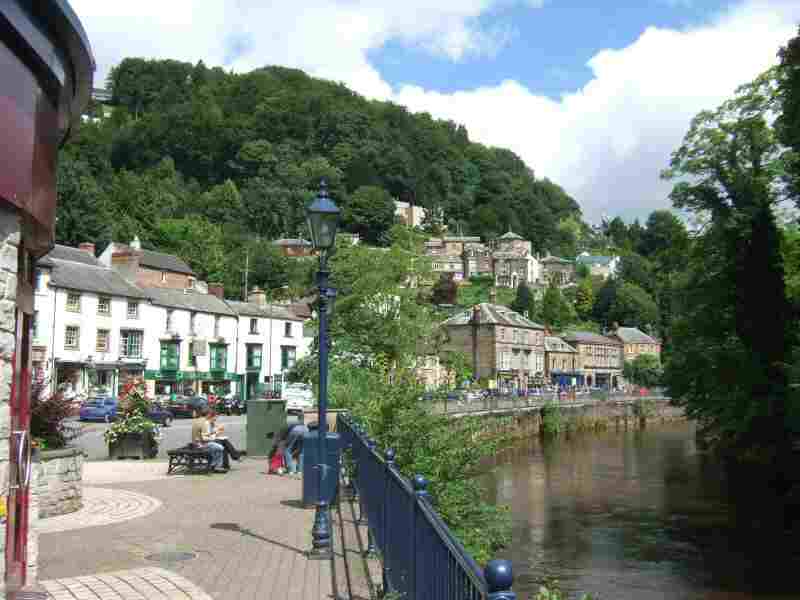
RIVER DERWENT
The Derwent rises at Swains Greave between Bleaklow and Howden Moors. It flows south through Derbyshire for its entire journey before merging with the River Trent near Shardlow. More than any other river its waters have played a vital part in driving mill machinery, that placed Derbyshire at the forefront of the Industrial Revolution.
Derwent Valley Mills World Heritage Corridor
In December 2001, the 15-mile stretch of the Derwent Valley from Matlock Bath to Derby was designated by UNESCO as a cultural World Heritage Site. The citation states: ‘The cultural landscape of the Derwent Valley is of outstanding significance because it was here that the modern factory system was established to accommodate the new technology for spinning cotton developed by Richard Arkwright. The insertion of industrial establishments into a rural landscape necessitated the construction of housing for the workers in the mills, and the resulting settlements created an exceptional industrial landscape that has retained its qualities over two centuries.’
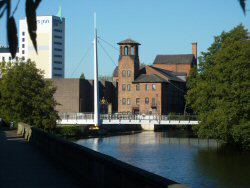

Midland Railway
The walk starts at the Midland Railway Station part of Derby’s historic Railway Quarter. Three railway companies were involved in running lines into Derby, the Midland Counties, the North Midland Railway Company, and the Birmingham and Derby Junction Railway Company. They decided that sharing a station would be the most inexpensive solution. A site was selected. It lay one mile to the south of the town, with only about one-third situated within the Borough, the remainder being in the small township of Litchurch. On 30 May 1839 at 1.18 pm, the first railway train steamed into Derby stopping at a temporary wooden platform to the south of the present station. The three independent companies that operated from the station joined together on 10 May 1844 to form the Midland Railway Company. As a result, swarms of workers began to flock to Derby. The majority were employed in railway work. But others found employment as companies expanded due to the railway’s arrival.
.THE WALK
This walk visits the historic Railway Quarter before following the River Derwent as far as the Museum of Making at Derby Silk Mill. Where you will find a great deal of interesting information about the railway industry and much more. On the return journey, The Quad is well worth a visit with its ever-changing exhibitions and the chance to take refreshments and even watch a film if you have time.
LOOK OUT FOR
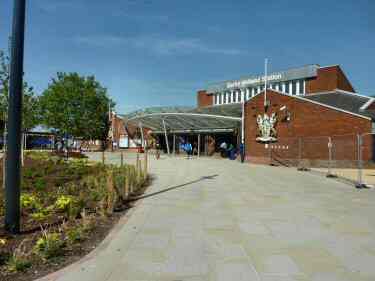
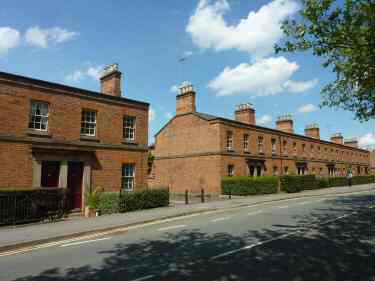
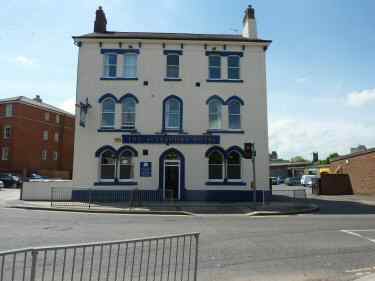
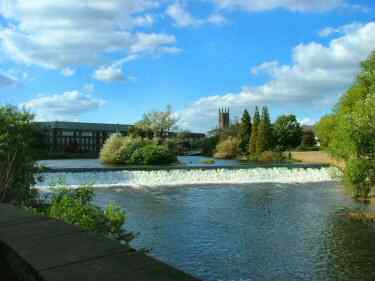
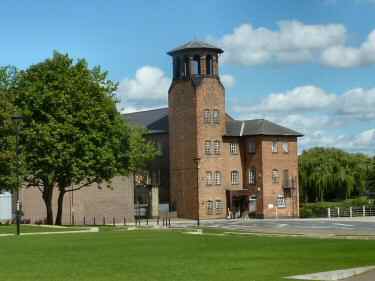
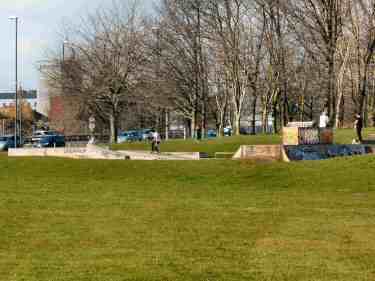
THE ROUTE
- The walk starts from the Midland Railway Station. It was on 30 May 1839 at 1.18 pm that the first railway train steamed into Derby. From this point continue towards the city centre along Railway Terrace. At the top end of the station car park, the old station clock has been mounted on a plinth and the coat of arms of the Midland Railway Company. On the other side of the road is the Railway Institute founded as a result of a group of employees of the Midland Railway setting up a Reading Society in 1850. The present building dates back to 1892 when the decision was made to remove several houses to accommodate the new cultural centre for railway workers.
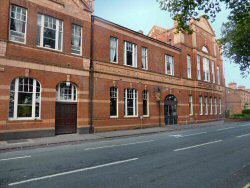
2. Railway Terrace Cottages were built to accommodate the more senior Midland Railway staff. The triangular block of streets North Street (now Calvert Street), Midland Place and Railway Terrace. The initial letter from the three streets results in NMR, which stands for North Midland Railway. The Brunswick Inn was built for the use of railwaymen and second-class passengers, it was opened in 1842 and is one of, if not the earliest examples of a purpose-built commercial inn in the country. Originally it was called ‘The Brunswick Railway and Commercial Inn’ and remained in the ownership of the railways for 105 years. The wall by the road between the Alexandra and the Brunswick Inn identifies where a branch of the former Derby Canal once ran to provide a waterborne service to industries in the Wellington Street area.
3. Cross the road opposite the Alexandra Hotel that in 1974, became the birthplace of Derby CAMRA (The Campaign for Real Ale). Walk down to the left of two paths to connect with the path that runs close to the River Derwent. Turn left and then after a few yards go to the right into the Bass Recreation Ground.
4. Keep close to the river and follow it around to go under Holmes Bridge into the River Gardens. The weir is on your right and a hydro powerhouse is on your left. Opened on 20 May 2013, it was named after the wooden bridge that used to cross the River Derwent near the weir. It exists primarily to power Derby City Council House, with any surplus being sold to the National Grid. Continue your walk through the River Gardens past the Council House, ascend a short flight of steps and cross Derwent Street.
5. Go down a flight of steps on the other side of the street. Follow the path by the river to Cathedral Green and the Museum of Making. Cross Cathedral Green to the statue of Bonnie Prince Charlie and turn left down Full Street. At the bottom of the street keep straight on past the front of the Council House.
6. Maintain the same direction until just before reaching the bus station you turn left into the River Gardens. Here you turn right and walk under Holmes Bridge to arrive back at Bass Recreation Ground. This time turn right and follow the path around to re-join the route you used earlier in the walk. Turn right and retrace your steps back to the start of the walk. Michael Thomas Bass, MP for Derby from 1848 to 1883 gave the land to the town in 1867, on which the Bass Recreation Ground now stands. Open-air swimming baths were built on the site. They comprised two baths, measuring 100ft x50ft and 129 dressing cubicles. The baths were demolished after the Second World War.
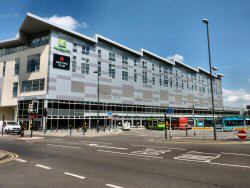
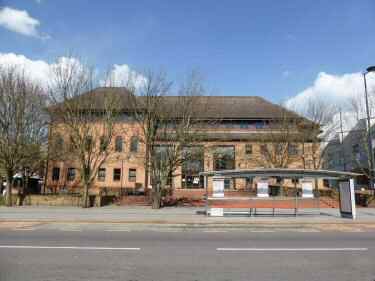
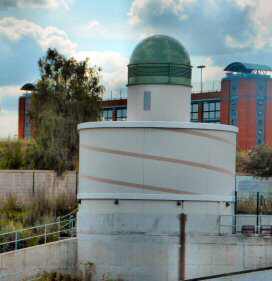
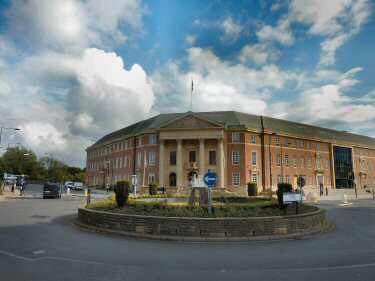
REFRESHMENTS
The Quad is on the northern side of Derby Marketplace. For more information visit: www.derbyquad.co.uk or telephone 01332 290606.
The Museum of Making at Derby Silk Mill, by the River Derwent facing Cathedral Green. For more information visit: www.derbymuseums.org/museum-of-making/visit or telephone 01332 641901
